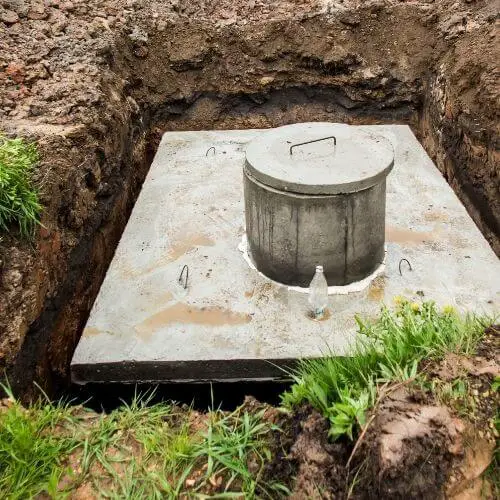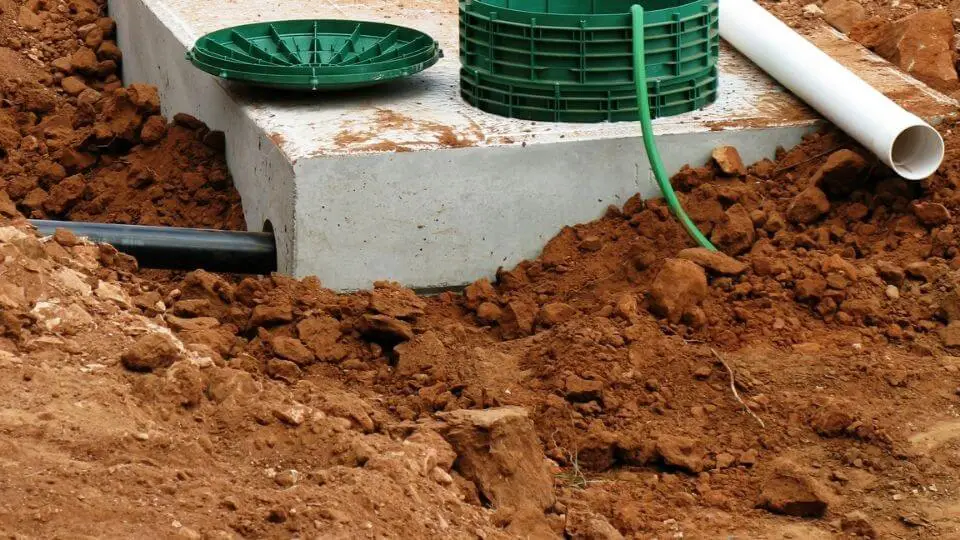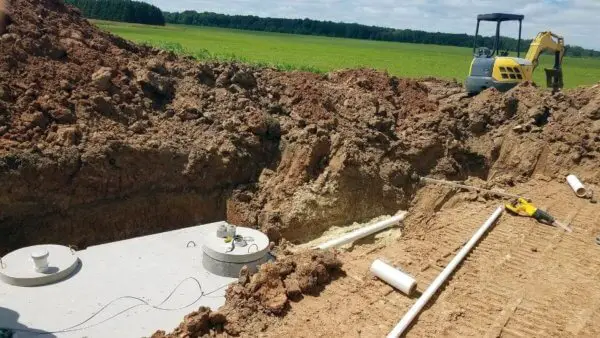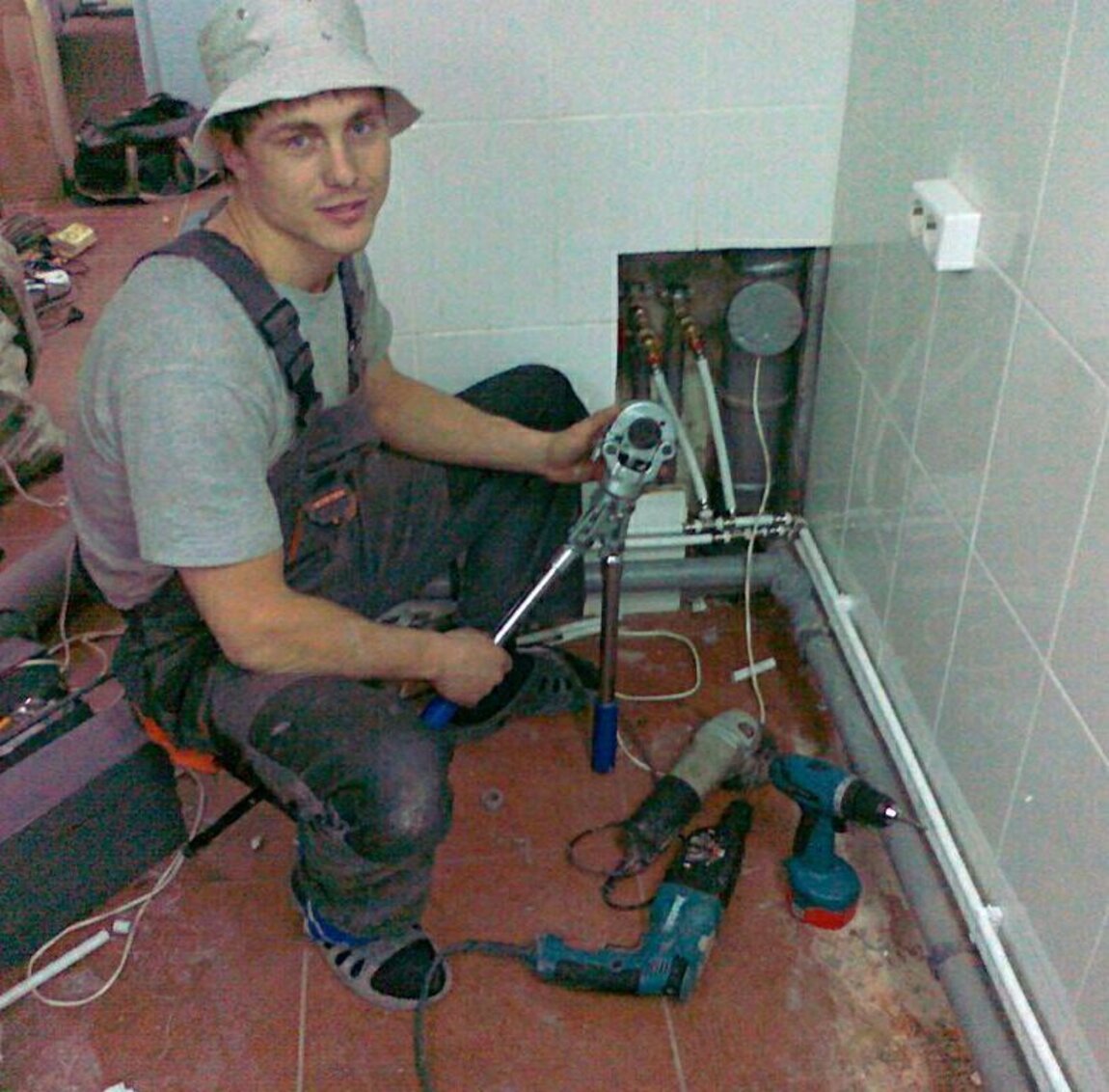Wastewater needs to go into a septic tank from where it can be filtered and sent into the surrounding ground. According to studies, there are possibilities for groundwater to get polluted if your septic tank has some leaks. That’s why is so important to have a septic tank that will work correctly for many years. So which one is better – concrete vs plastic septic tank?
Your house is not connected to a municipal sewage system? Usually in rural areas, most of the houses come with pre-installed septic tanks. As time goes septic tank materials may show some downsides and cause problems.
We are going to compare septic tank materials, price, longevity, and behavior over time and give our opinion on what you should choose. [1]
Concrete vs Plastic Septic Tank

For someone who is living in a small rural house, our suggestion will be a plastic tank. They can last for decades, can be moved easily, and placed almost everywhere. If you need to drive your vehicle or machine over a buried septic tank and need something more durable, concrete septic tanks are your choice. In my opinion, concrete ones are a better pick.
Advantages of concrete septic tanks

One of the advantages making septic tanks so popular is that you can build them with locally available materials. Concrete is such a material, and it can be used in all climates and conditions with excellent results. Here are the pros of using a concrete septic tank:
- They use less space
Once they are installed underground, they don’t use extra space in your yard.
- Durability
Concrete septic tanks are a lot more durable than plastic tanks.
How long do concrete septic tanks last? They can last up to 50 years with proper maintenance.
- Low maintenance
Being so resilient makes concrete septic tanks require less maintenance than their plastic counterparts. They could be repaired.
- Resistant to shocks
You can drive over the soil where a concrete tank was buried without worrying it will crack. Other environmental changes such as soil conditions and tree roots will not affect a concrete septic tank either.
- Higher effluent levels
A concrete septic tank has a higher effluent level than plastic septic tanks. This involves a lower risk of wastewater building up inside the tank and overflowing.
Their higher performance makes them approved in all states.
-
Neutralises water pH
Concrete wall of septic tank may neutralize acidity of rainwater.
Disadvantages of concrete septic tanks

As sturdy as they are, concrete septic tanks also come with some drawbacks:
- Higher upfront costs
A concrete septic tanks costs more to purchase and install compared to a plastic one.
- Difficult installation
Concrete is heavy, so installation takes longer and requires the use of heavy equipment. If you choose a 1000-gallon concrete septic tank, transportation and installation will be no simple tasks.Price may vary from $3,280 – $5,040. [2]
Another issue with the installation of concrete septic tanks is that they require lining. Concrete is a porous material and needs to be lined, which extends installation time.
- Disruptive repairs
A concrete tank can be more difficult to repair than a plastic one. Corrosion is one of the most common issues affecting concrete septic tanks.
- Can deteriorate rapidly if their quality is low
If you decide to invest in a good 1000-gallon concrete septic tank, best is to buy a premium product. When the quality is substandard, concrete septic tanks can crack early. Without proper maintenance, a concrete tank will collapse in time.
- More prone to leaking than plastic tanks
Those cracks that can easily develop in a low-quality concrete septic tank will cause leaks. Untreated water will seep into the ground and possibly pollute groundwater.
- Difficult removal
Once past their lifetime, concrete tanks need to be replaced, and their removal is difficult and costly.[3]
Advantages of plastic septic tanks

Many homeowners and businesses opt for plastic septic tanks, and not without a few good reasons:
- Easy installation
Plastic septic tanks can be installed in virtually any location without requiring the use of heavy equipment.
- Easy transportation
Plastic is obviously lighter than concrete and is easier to transport to your home.
- Resistant to corrosion
Water corrosion, the main problem affecting concrete septic tanks, is not a problem for plastic ones. However, if damaged, they couldn’t be repaired so easily. Plastic welding is not so popular.
- Cheaper price
A plastic septic tank costs less than its concrete counterpart.
Disadvantages of plastic septic tanks
Plastic comes in all shapes and sizes and can sometimes have a bad reputation. When used for septic tanks, it can pose the following problems:
- Prone to crushing
Because plastic is not as sturdy as concrete, it can be crushed beneath the weight of the soil. You will need to avoid driving over an area where a plastic tank is buried as well.
- Sensitive to environment changes
If concrete tanks are not susceptible to environmental changes, the situation is different with plastic tanks. They can rupture due to changing soil conditions and vibrations.
- More maintenance required
Compared to concrete septic tanks, plastic tanks can require a little more maintenance.
- Lower lifespan
Concrete tanks tend to last a little longer than plastic ones.
- Paying attention with the installation
When not installed properly, a plastic septic tank can float towards the surface of the ground. This can happen when the groundwater is close to the surface.
- It may not be approved in your state
It’s possible for plastic septic tanks to not be approved in the state where you live. Before purchasing and installing one, you need to check local regulations.
What about fiberglass septic tanks?
Fiberglass septic tanks are a different type of tanks, coming with some solid advantages:
- Weighing less than concrete tanks and being easy to install anywhere;
- Unlike plastic, fiberglass does not bend due to groundwater pressures. By using a fiberglass septic tank, you avoid issues such as bending inwards, reduced volume, and lids no longer fitting.
- Fiberglass tanks often come with extended warranty, unlike their plastic counterparts.
In conclusion, fiberglass is a superior alternative to plastic and eliminates all the issues associated with plastic.[4]
Fiberglass is mistaken for another type of plastic, but there is a difference between the two materials. Fiberglass is inorganic, while plastic is organic. Fiberglass is a reinforced material composed of glass fibers embedded in a resin matrix, with superior properties.
Pros and Cons of Septic Tanks
They provide the following advantages:
- Can be easily built with available materials;
- Is a simple technology that anyone can use with no expert skills;
- Does not require the use of electrical energy;
- Is built underground and does not take up space in your yard;
- Has a long service life and low operating costs.
However, there are also a few cons against using a septic tank:
- Having to ensure regular desludging;
- Not suitable in areas prone to flooding;
- The manual cleaning of the septic tank is hazardous and unpleasant;
- Both effluent and sludge require further treatment to prevent harm to the environment;
- Septic tanks need to be vented in order to ensure the controlled release of odors and potentially dangerous gases.
Read Also: Can You Put Dead Animals In Septic Tanks
The Verdict
A general comparison between concrete vs plastic septic tank is impossible to make. It would not be fair to say one is better than the other when each material has its own pros and cons.
However, what we can say for sure if you are interested in a plastic septic tank is to pay attention to its quality.
The worst mistake you can make is buying a cheap tank made from a material such as medium density polyethylene. This type of material is not suitable for underground installations.
Even if a plastic tank seems strong when you buy it, the situation is different after installation.
What many homeowners don’t take into account is the huge groundwater pressure, greater than you imagine. That water cannot be displaced and instead is contained by the weight of soil above it.
Groundwater pressure increases to such an extent that it will eventually bend the tank. The advantages and disadvantages of plastic septic tanks are irrelevant if the plastic is not study enough to withstand underground forces.
Even if you surround the tank with concrete, distortion can still happen. Water can seep through concrete and bend the tank anyway. Distortion will affect the functionality of other elements connected to the tank, such as pipes and hose bibs.
Unless you can build a waterproof chamber for the plastic tank, best is to invest in the best quality septic tank you can afford.
Experts often recommend installing a fiberglass septic tank with a gravel backfill to avoid the risk of distortion or cracking.
So, when it comes to the concrete vs plastic septic tank debate, the winner is a third type.
The fiberglass tank is just as convenient as the plastic one, but a lot more resilient.

Michael Davis is a heating & plumbing expert who currently works as independent contractor in SC. He also writes for Plumbertip.
For almost 10 years he worked on various plumbing tasks across South Carolina.



